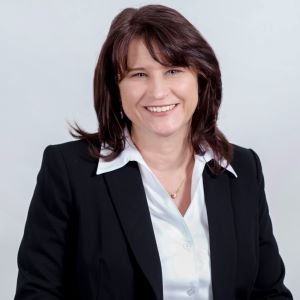The only constant in life is change — and for credit union managers, that includes interest rates. A sustainable balance between what they pay and charge for funds is essential, and a volatile rate environment can make that a difficult balance to strike.
For U.S. credit unions, year-over-year loan growth in the third quarter was 2.5% and share growth was 3.2%. Meanwhile, TruStage calls for 6% growth in 2025 in both those crucial categories.
Of course, those results depend on interest rate movement and the economy. The Fed continued lowering its benchmark rate in December but signaled a slowdown in rate decreases in the year to come, barring unforeseen changes. With all of that in mind, five credit union decision-makers offer their thoughts on 2025.
No Feeding Frenzy

Tom Gryp has been president and CEO of Notre Dame FCU ($1.2B, Notre Dame, IN) since September 2010.
What is your outlook for deposits in 2025? What factors are you watching that might change your forecast?
Tom Gryp: Barring another liquidity crisis like the Silicon Valley Bank collapse, I see access to deposits remaining strong in 2025. That said, deposits are no longer “lazy,” meaning depositors will move to seek better rates if the incumbent credit union is not competitive. I expect cost of funds to increase even in a falling interest rate environment, as traditionally low-paying share accounts migrate to money markets, certificates, or other instruments that pay more.
Top of mind are macro events like another liquidity crisis that will drive depositors to where they deem their deposits above $250,000 to be safer, which has traditionally been money center banks considered to be too big to fail.
Second would be the Federal Reserve’s balance sheet. If the Fed accelerates the speed at which it extracts reserves from the system, it could trigger liquidity concerns.
Is your shop doing anything new on the deposits front or focusing on a specific area or product?
TG: We made the decision a while ago to avoid the feeding frenzy caused by hot money certificates. To us, such a strategy is a fool’s errand that creates no member stickiness and only solves liquidity challenges for a few months. Instead, we focus on making our share draft accounts more attractive.
We’ve seen a great deal of success with individuals, businesses, and non-profits moving their major operating accounts our way. How do we make them more attractive? We pay high rates on share draft balances plus we do not charge fees. That strategy might or might not be as expensive as hot money certificates, but we establish long-term relationships that nearly always blossom into new opportunities.
Shoreline Credit Union is responding to falling deposit rates while girding its balance sheet for loan growth. Read more in “Shoreline Lands On Its 2025 Deposit Strategy.”
A Focus On Direct Members

Michael Cruz joined Seattle Credit Union ($1.1B, Seattle, WA) as its chief financial officer in July 2024.
What is your outlook for deposits in 2025? What factors are you watching that might change your forecast?
Michael Cruz: Deposit growth will remain a challenge in 2025, though we expect some improvement over 2024. A key factor in deposit growth lies in growing direct members, who represent the greatest opportunity for us to deliver value and capture deposits.
While total member growth can benefit from indirect channels, converting indirect members into deeper relationships — like deposits — remains very difficult.
Direct members are the engine of our credit union. By focusing on attracting and engaging direct members, we will drive meaningful deposit growth despite significant competition. Upward direct membership growth is a good indicator of future deposit inflows.
Is your shop doing anything new on the deposits front or focusing on a specific area or product?
MC: In 2025, we’re committed to rewarding our loyal members with meaningful incentives that match the depth of the relationship. Whether through discounted loan rates, higher deposit yields, or other financial solutions, we’re bolstering our member-first strategy to stand out in a fiercely competitive deposit market. The more direct members we attract and engage, the more deposits will follow.
Deposits And Payments Working In Tandem

Shelia Kime has been with Texas Trust Credit Union ($2.0B, Arlington, TX) for 25 years and its senior vice president of operations since February 2020.
What is your outlook for deposits in 2025? What factors are you watching that might change your forecast?
Shelia Kime: Based on current economic and industry trends, Texas Trust is optimistic about deposit growth in 2025. Both credit unions and banks will face growing competition from fintechs and non-traditional institutions.
We’re prioritizing member-focused innovations to strategically position ourselves to achieve deposit growth while enhancing service to our members. We’re closely monitoring the impact of technological advancements as well as potential regulatory changes that might influence deposits and payments, potentially shaping our future outlook.
Is your shop doing anything new on the deposits front or focusing on a specific area or product?
SK: We’re focused on developing products and services based on what’s important to our members. This currently includes high-yield accounts, certificates of deposit, investment options, omnichannel account opening solutions, digital innovations, financial wellness, and community impact.
Our deposit growth is aligned with our payment strategy, as the two work in tandem to grow assets by attracting funds, increasing account activity, and driving loan opportunities. Innovative payment solutions bring in new members, increase account usage, and boost deposit balances. In turn, deposits provide funding for lending and other asset-generating activities, which will help drive our growth. By enhancing both we can achieve long term sustainable asset growth. Of course, we constantly monitor trends and market conditions and adapt our strategies accordingly.
Short-Term Changes, Long-Term Results

Tim Alther joined UVA Community Credit Union ($1.5B, Charlottesville, VA) as the cooperative’s senior vice president of retail and deposits in November 2023.
What is your outlook for deposits in 2025? What factors are you watching that might change your forecast?
Tim Alther: I think it will be a more difficult year for deposits overall. In terms of large-scale macroeconomic forecasting, I see a declining rate environment. The speed or magnitude of that rate environment could be a discussion point. Anything could change the trajectory of rates, particularly if there’s something large-scale happening in the economy. That’s the only factor that would likely shift our current forecast. A lot of what I focus on is rate movement.
Is your shop doing anything new on the deposits front or focusing on a specific area or product?
TA: We have several initiatives, including a new program specifically for members younger than 18. We’re also working on initiatives such as higher-rate and more inclusive savings products that cater to a variety of needs — whether someone is starting their first retirement account or looking to consolidate accounts across different financial institutions.
We’ve also adjusted some policies. For example, we now allow account opening via video for individuals who might not have a driver’s license or access to a branch. We’ve introduced an in-depth educational series for every new account. This includes showing members a group of videos with tips on how to use an ATM, balance a checkbook, and manage an account responsibly.
Although these initiatives might not result in material changes to our balance sheet immediately, we believe they will have a positive impact on our members for years to come.
Stay The Course, Reprice As Needed

Tom Griffiths has been with Atomic Credit Union ($730.4M, Piketon, OH) for 31 years, the past 22 as its CEO.
What is your outlook for deposits in 2025? What factors are you watching that might change your forecast?
Tom Griffiths: Our outlook remains positive. We’ve experienced 19.94% deposit growth during the past 12 months compared to roughly 3% for our peers. We needed that to maintain 22% loan growth over the same period. With a 90% loan-to-share ratio, a solid net worth ratio, and delinquency at only 19 basis points, we’re firing on all cylinders.
We’ve experienced these growth metrics for numerous consecutive years, all organically. We envision deposit rates to continually decline throughout 2025 as it is well known that [President-elect] Trump is adamant that interest rates be as low as possible, specifically to jump-start the housing market. Ultimately, we believe we are in a long-term declining rate environment that will most likely mean more deposits into money market accounts than we’ve had in the past several years.
Is your shop doing anything new on the deposits front or focusing on a specific area or product?
TG: Atomic will be staying the course on the deposit front, tweaking the deposit faucet as needed to meet loan demand. We’ll also be enjoying the benefits of repricing our deposits in this much-anticipated declining rate environment.
Unlock Smarter Deposit Strategies With Peer Suite. Compare your credit union’s deposits and savings performance against industry peers to uncover trends, identify opportunities, and elevate your strategy. Peer Suite gives you the data-driven insights you need to stay ahead. Request a performance analysis session today.